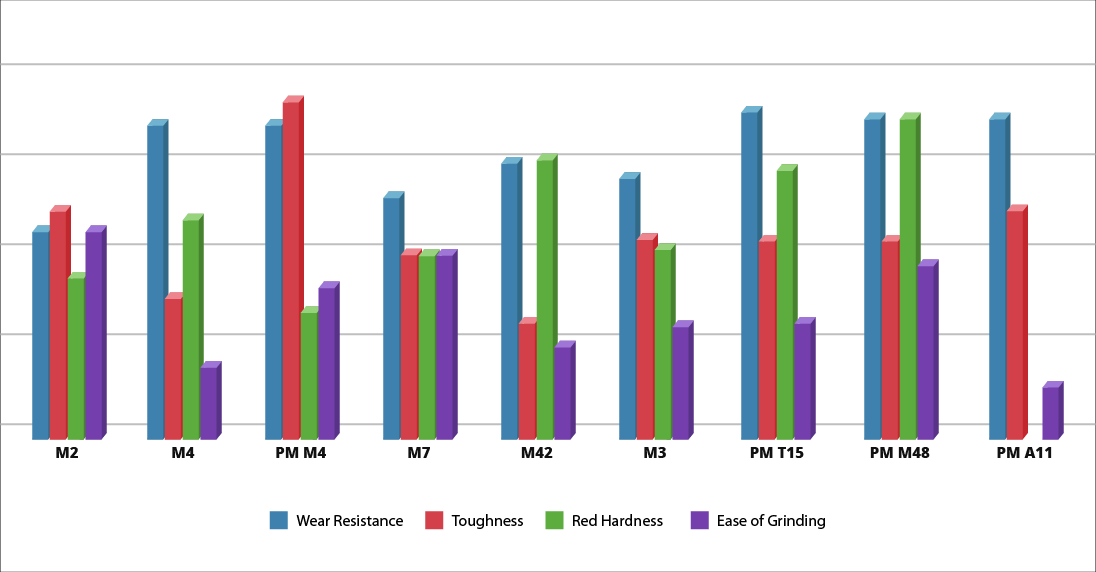Griggs Steel no longer carries this product but has PM M4.
PM 23 high-speed tool steel is a high alloyed powder metallurgical high-speed steel corresponding to AISI M3:2. This steel is an ASP 2023 equivalent and has a very good abrasive wear-resistance in combination with a high compressive strength. It is suitable for demanding cold work applications like blanking of harder materials such as carbon steel or cold rolled strip steel, and for cutting tools. Its machinability and grindability are superior than that of conventional high-speed steel, along with its dimensional stability after heat treatment has been applied.
Other Known Names: ASP 2023, S790, M3-2
Griggs Steel Color Code:Salmon
Broaches, Gear Cutters, Knives, Rolls, Taps
Density
0.287 lb/in3 (8256 kg/m3)
Modulus Of Elasticity
33 x 106 psi (230 GPa)

| Maximum | Typical | ||||||
|---|---|---|---|---|---|---|---|
| Carbon | Chromium | Tungsten | Molybdenum | Vanadium | Cobalt | Annealed | Tempered |
| C | Cr | W | Mo | V | Co | Hb | HrC |
| 1.28 | 4 | 6.4 | 5 | 3.1 | - | 260 | 64 |
| Annealing | Preheat | Austenitizing | Quench | Tempering |
|---|---|---|---|---|
| Temp | Temp | Temp | Medium | Temp |
| °F | °F | °F | °F | |
| 1575/1625 | 1550/1600 | 2125/2175 | Salt/Oil/Atm | 1040 |
Heat rapidly from the preheat, typically by transferring to a second furnace.
1920-2160°F (1050-1180°C) according to the desired final hardness.
The tool should be protected against decarburization and oxidation during hardening.
Vacuum furnace with high speed gas at sufficient overpressure (2–5 bar).
Martempering bath or fluidized bed at approx. 1020°F (550°C).
Forced air/gas.
Quenching should be continued until the temperature of the tool reaches approx. 120°F (50°C). The tool should then be tempered immediately.
For applications where maximum toughness is required use a martempering bath or a furnace with sufficient overpressure.
Temper immediately after quenching.
For cold work applications tempering should always be carried out at 1040°F (560°C) irrespective of the austenitizing temperature. Temper three times for one hour at full temperature. The tool should be cooled to room temperature between the tempers. The retained austenite content will be less than 1% after this tempering cycle.
Annealing must be performed after hot working and before re-hardening
Heat ASP 2023 at a rate not exceeding 400°F per hour (222°C per hour) to 1600°F (871°C), and hold at temperature for 1 hour per inch (25.4 mm) of thickness, 2 hours minimum. Then cool slowly with the furnace at a rate not exceeding 30°F per hour (17°C per hour) to 1000°F (538°C). Continue cooling to ambient temperature in the furnace or in air.